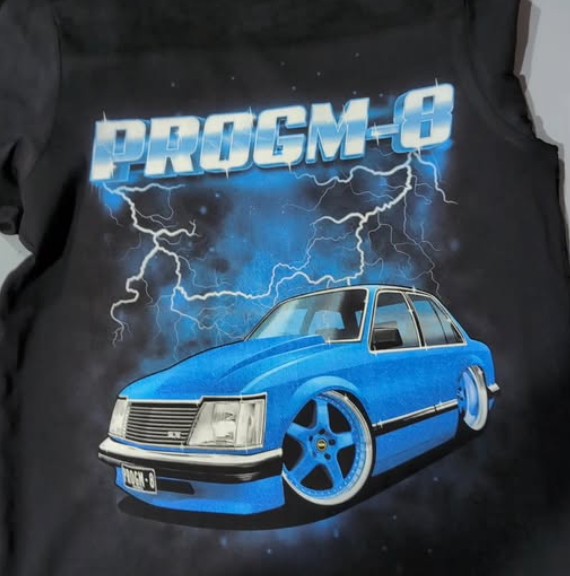
DTG Printing and Grafix Tees
Share
Why DTG Printing Reigns Supreme for Stunning Graphic Tees
Graphic tees are a staple in modern fashion, allowing individuals to express their personality, interests, and creativity. But to truly make a graphic tee shine, the printing method is paramount. While several techniques exist, Direct-to-Garment (DTG) printing stands out as the best choice for producing vibrant, detailed, and high-quality graphic tees.
So, what makes DTG the go-to method for bringing complex graphics to life on apparel? Let's dive in.
What is DTG Printing?
Direct-to-Garment (DTG) printing is a modern textile printing technology that works much like a standard inkjet printer, but for fabric. Using specialised aqueous inks, a DTG printer applies the design directly onto the surface of the garment. The ink is absorbed by the fibres, becoming an integral part of the fabric rather than sitting on top.
This digital process eliminates the need for screens, stencils, and extensive setup, making it incredibly versatile and efficient, especially for intricate designs.
The Unmatched Advantages of DTG for Graphic Tees
When it comes to showcasing detailed artwork, complex illustrations, or photographic images on a t-shirt, DTG printing offers a suite of benefits that other methods struggle to match:
-
Exceptional Detail and Unlimited Colors: This is where DTG truly shines for graphics. Unlike screen printing, which requires separate screens for each color and is best suited for designs with a limited color palette, DTG can reproduce full-colour images with millions of colours, intricate shading, gradients, and fine details with remarkable accuracy. If your graphic tee design is rich in detail or features photographic elements, DTG is the only way to capture its full potential.
-
High-Resolution Prints: DTG printers are capable of printing at high resolutions, resulting in sharp, crisp images and text. This is crucial for graphic tees where clarity and definition are key to the design's impact. Blurry or pixelated graphics can ruin the aesthetic, but DTG ensures your design looks professional and high-quality.
-
Soft Hand Feel: Since the water-based inks are absorbed into the fabric, DTG prints have a much softer feel compared to methods like screen printing with thick plastisol inks or heat transfers that can feel like a patch on the shirt. The design becomes part of the garment, ensuring maximum comfort for the wearer.
-
Ideal for Small Orders and One-Offs: DTG has minimal setup requirements. There are no screens to create, meaning it's cost-effective and efficient for printing small batches or even single, custom graphic tees. This is perfect for designers, artists, or businesses offering print-on-demand services where individualised designs are common.
-
Quick Turnaround Times: Due to the simplified digital process and lack of extensive setup, DTG printing offers faster production times, especially for smaller runs. This allows for quicker delivery of custom graphic tees to customers.
-
Eco-Friendly Considerations: Many DTG printers use water-based, biodegradable inks, which are more environmentally friendly than some traditional screen printing inks. The on-demand nature of DTG also reduces waste associated with overproduction.
DTG vs. Other Printing Methods for Graphics
While screen printing is excellent for bold designs with few colours and high volume, it falls short when attempting to reproduce complex, multi-coloured graphics or photographs. Each colour requires a new screen, increasing setup costs and complexity significantly for detailed artwork.
Heat transfers and vinyl methods can be suitable for some graphic elements, particularly lettering or simple shapes, but they often lack the soft feel of DTG, can have limitations on detail, and may not be as durable over time, potentially cracking or peeling.
Sublimation is great for vibrant, full-colour prints, but it is limited to polyester fabrics and typically requires white or light-coloured garments, restricting design possibilities for graphic tees on a wider range of apparel.
Conclusion: The Clear Winner for Graphic Tees
For graphic tees that demand intricate details, a full spectrum of colours, and a comfortable feel, Direct-to-Garment (DTG) printing is the undeniable champion. Its ability to translate complex digital designs directly onto fabric with high resolution and a soft finish makes it the superior method for creating stunning, wearable art.
Whether you're an artist selling your work, a brand launching a merchandise line, or an individual creating a unique personal tee, choosing DTG printing ensures your graphic tees look their best and stand out from the crowd.